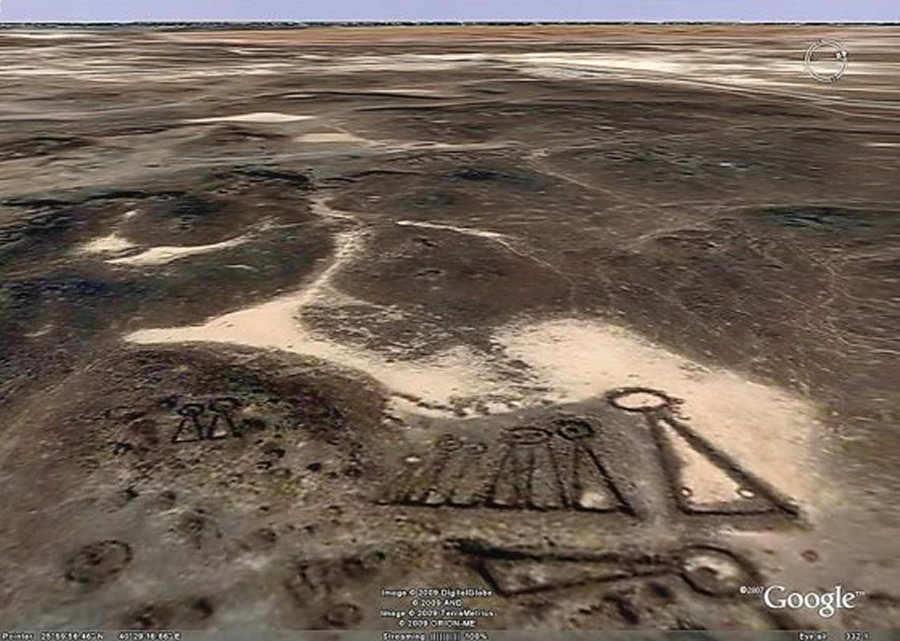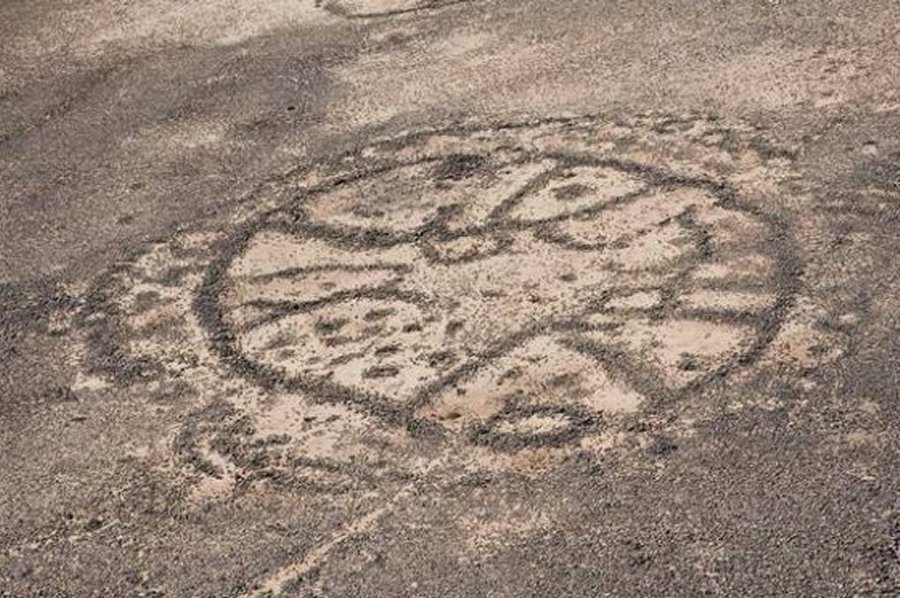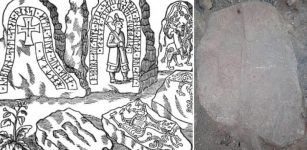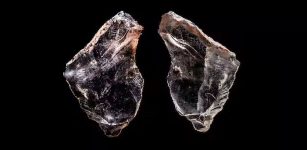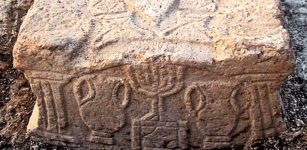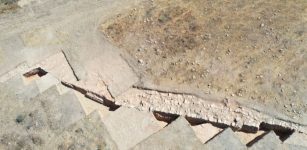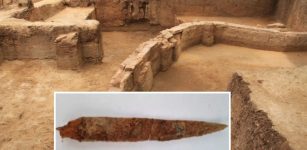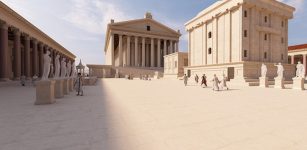400 Mysterious Stone Formations That Could Be 7,000 Years Old Spotted In Google Earth Satellite Images Over Saudi Arabia
AncientPages.com - Using Google Earth satellite images, researchers from the University of Western Australia have discovered four hundred strange formations located in west-central part of Saudi Arabia.
In the Harrat Khaybar region of Saudi Arabia, “kites” take on entirely different shapes—most notably the “square pocket” and “barbed arrow”—and the low walls of many of them show ruler-straight lines, raising new questions for archaeologists. Image via Aramco World
The formations, which are believed to be structures or gates, are located in remote volcanic region of Harrat Khaybar that covers approximately 12,000 km2.
For now it is unknown how the structures were used and who constructed them, but preliminary, researchers estimate their age to be up to 7,000 years old.
The gate structures on the side of a lava dome. Google Earth's image from above.
Their walls are rather low and their length varies from 500 meters long to approximately 10 meters.
Mysterious elongated stone structures located on on the edge of volcanoes. Credits: Google Earth images
The Work Of The ‘Old Men’
Back in the 1920’s, British Royal Air Force opened an airmail route from Egypt to India. The pilots were struck by the numbers and variety of archaeological remains visible in that rugged, thinly populated landscape. Bedouin told them the structures and walls they saw were “the works of the ‘Old Men.’”
Thousands of huge ancient structures made of stone are clearly visible from the air and we still know very little about these enigmatic wheel-shapes, and straight lines.
The “works of the Old Men” located 600 kilometers (372 mi) south of the Jordanian panhandle and about 200 kilometers (125 mi) north of Madinah. Most striking of all structures are are the so-called “kites,” the remnants of long stone walls most likely built by groups of hunters as a animal trap.
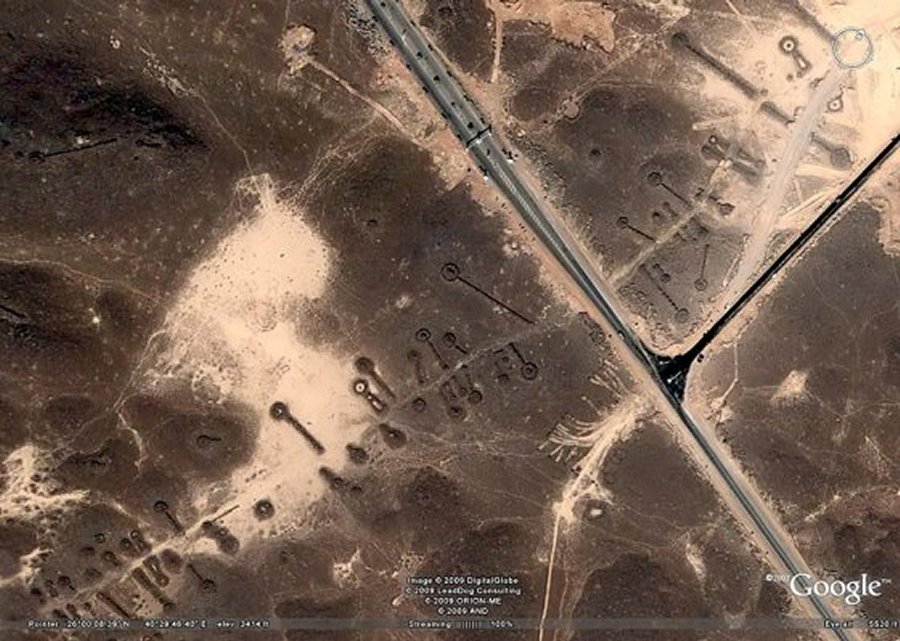
In the Al-Hayit region, keyhole and pendant shapes vary in size from a few meters to dozens of meters, and they are often found arranged along "avenues" that are invisible to builders of modern highways.
The walls outline the shape of a child’s kite. But the kites are huge: The “body” is a wall enclosing a corral-like space often 100 or more meters (328') across. The “tails,” two or more walls running out from the head, are typically each a few hundred meters long, but they can be as long as two or three kilometers (1.2–1.8 mi).
On the ground, however, kites are almost impossible to find, because the walls, built of basalt boulders, are only about a meter (3') wide and their surviving height is seldom over half a meter, making them nearly invisible on a landscape already thickly strewn with the same rock.
See also:
Thousands Unknown Ancient Structures Seen From Space: Puzzling Aerial Archaeology In The Middle East
A Great Flood Destroyed The Mysterious Ancient City Of Petra – Evidence Has Been Found
Ritual Bath In Herod’s Fortress Found In Ruins Of Machaerus, East Of Jordan River
Hundreds of these kites and there may ultimately be thousand are already widely recorded as far north as Syria. Elsewhere in the world, they are known as far away as Uzbekistan and Scandinavia.
Why Did Ancient Kite Builders Construct Such Straight And Angular Walls?
There weren’t any high tech construction or even moving companies to help in the building of these walls which makes these accomplishments all that much more impressive. Without moving companies or sophisticated tools, how these structures were built and moved into place is quite extraordinary.
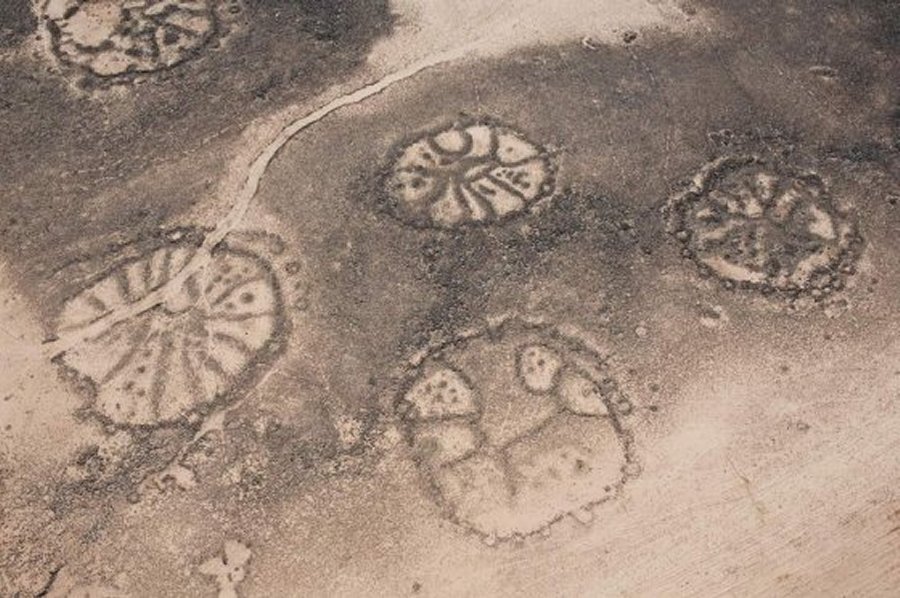
Giant stone structures form wheel shapes with spokes often radiating inside. Here a cluster of wheels in the Azraq Oasis. CREDIT: David D. Boyer
An elementary concept of precise geometric forms was clearly familiar to the designers. Indeed, it was apparently not enough for the builders to broadly define an enclosure, tails and contiguous circular enclosures—possibly hides for hunters—but it was also important to carry that through into careful design on the ground at the building stage.
The square-pocket kite uses a line hidden at the end of each pocket. Again this design is, so far, unique to the Harrat Khaybar area.
Some Structures Were Ancient Tombs
Scientists have also identified of what appears to be two types of burial structures. First there are “pendant tombs”—circular burial enclosures at the end of a line of small cairns. Pendant tombs often turn up in large groups, forming what appear to be entire cemeteries, or parts of them, and they are to be counted in the hundreds, perhaps even in the thousands.
Then, there are the “keyhole tombs” and the “gates,” structures that are striking because of their unexpected, unique forms and their astonishing numbers. The keyhole tombs usually consist of a circular enclosure at the head of stone walls that form an isosceles triangle.
There are numerous variations in size and in the relationships of circles and courtyards: In a few places the two are completely separated, and in others the triangle has been elongated so much it begins to look similar to the general form of some pendant tombs.
Much research must be conducted in the area to determine the purpose of these amazing ancient structures that are so clearly visible from the air. There are obviously of great historical importance and hopefully the will soon reveal some of the ancient secrets.
AncientPages.com




